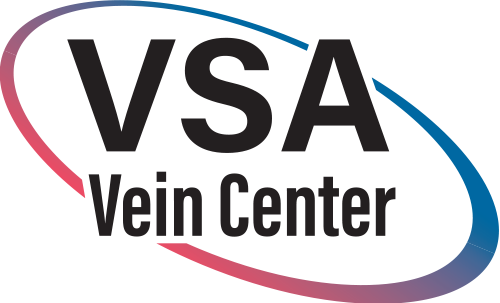Your circulatory system is a complex network of essential arteries, veins, and lymph vessels. Although this system is strong enough to sustain continuous pressure for many years, its overall performance can be impacted by certain diseases, known as vascular diseases. These conditions may affect a single isolated area, or your entire circulatory system altogether.
In order to protect and care for this intricate network, here we share a list of vascular diseases and the symptoms to watch for.
Common Types of Vascular Diseases
Atherosclerosis
The accumulation of fatty deposits (known as plaque) in your arteries is called atherosclerosis. Over time, this plaque buildup narrows your arteries, impeding blood flow. Atherosclerosis can be serious because it increases your risk of heart attack or stroke.
In many cases, atherosclerosis doesn’t produce symptoms until an artery is almost completely blocked, or until a stroke or heart attack occurs. Symptoms that do occur in these serious events will vary based on the affected artery’s location:
- Shortness of breath and unusual heartbeat can occur if coronary arteries are affected.
- Drooping facial muscles, vision changes, and difficulty speaking can develop when a vein that carries blood to the brain is blocked.
- Numbness, leg pain while walking, cold feet, and aching or burning in your toes and feet can occur if arteries in your lower body are affected.
Peripheral Artery Disease
Peripheral artery disease (PAD) occurs when your arteries, usually in your lower extremities, become narrowed or blocked. While atherosclerosis is a common contributor, not all cases of PAD share this cause. Having high blood pressure, high cholesterol, diabetes, or a history of smoking can also lead to PAD.
The primary symptom of PAD is pain in your calf, thigh, hip, or buttocks during walking and other physical activity, which typically subsides when you’re able to rest. Other signs include muscle atrophy, nonhealing ulcers or sores on your legs and feet, and numbness in your feet.
Carotid Artery Disease
Also known as carotid artery stenosis, carotid artery disease occurs when your carotid artery becomes blocked by plaque. This large artery is found on either side of your neck and is responsible for delivering blood to your brain. Carotid artery disease can develop in one or both arteries. In either case, having this condition increases your risk of stroke.
Like some other vascular diseases, carotid artery disease may not present symptoms on its own. Symptoms can occur, however, when pieces of plaque travel to and cut off blood flow to part (or parts) of your brain. Known as a transient ischemic attack (TIA), this temporary blockage often precedes a full-blown stroke and may present similar symptoms. Drooping of one side of your face, slurred speech, loss of vision, and loss of sensation can all point to either TIA or stroke.
Deep Vein Thrombosis
Deep vein thrombosis (DVT) is characterized by a blood clot in one of the major veins of your body. Because clots can dislodge and reach your lungs, where they can obstruct vital blood and oxygen flow, DVT is considered a medical emergency. Symptoms include pain and swelling in your leg, skin that feels warm to the touch in the affected area, and skin color changes near the clot. If the clot travels and reaches your lungs (known as a pulmonary embolism), symptoms may include accelerated pulse and breathing, lightheadedness, chest pain, and shortness of breath.
Schedule an Appointment With Vascular Disease Specialist at Vascular Surgical Associates
Vascular diseases can be serious and always call for specialty care. From venous to arterial conditions, our specialists offer a range of services and will ensure you receive the best possible care. If you are concerned about your vascular health for any reason, schedule an appointment online or by calling 770-423-0595.





